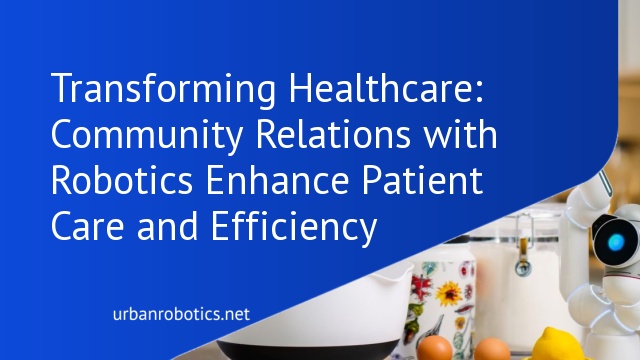Evolution of Robotics in Healthcare
Robotics has significantly progressed in healthcare over the decades. Early innovations set the foundation for today’s advanced systems.
Early Developments
Early robotic systems in healthcare emerged in the 1980s. The first robotic surgical system, PUMA 560, performed a brain biopsy in 1985. In the 1990s, the AESOP system was introduced for endoscopic procedures. These early robots, although basic by today’s standards, demonstrated the potential of robotics in improving precision and reducing recovery time.
Modern Advancements
Recent advancements have made robotic systems more sophisticated. The da Vinci Surgical System, introduced in 2000, is widely used for minimal invasive surgeries, offering high precision. Robotic exoskeletons aid in rehabilitation, helping patients regain mobility. AI integration in robotics now enhances diagnostic capabilities, making systems such as the CyberKnife efficient in targeting cancerous tissues.
Impact on Patient Care
Robotics in healthcare has transformed patient care by improving efficiency, increasing accuracy, and enhancing patient experiences.
Improved Efficiency
Robots streamline healthcare operations, minimizing delays and increasing productivity. Automated systems handle routine tasks like medication dispensing and patient monitoring, freeing up healthcare professionals to focus on complex care activities. Surgical robots assist in precise procedures, reducing surgery time and enabling quicker patient recovery. For instance, automated medication dispensers ensure timely administration, improving patient adherence to treatment plans.
Enhanced Accuracy
Robotic systems offer unparalleled precision in medical procedures. Advanced algorithms guide surgical robots, reducing the margin of error and improving outcomes. In diagnostics, robots equipped with AI analyze complex data sets, providing accurate readings and early disease detection. The da Vinci Surgical System exemplifies this, allowing for minimally invasive surgeries with high precision, leading to better patient outcomes and decreased recovery times.
Patient Experiences
Robots also enhance patient interactions, offering consistent care and improving satisfaction. Telepresence robots enable remote consultations, expanding access to healthcare services. In rehabilitation, robotic exoskeletons assist patients in regaining mobility, providing personalized therapy and feedback. For example, patients using robotic-assisted physical therapy often report faster recovery and higher engagement during sessions, fostering a more positive healthcare experience.
Challenges and Ethical Considerations
Incorporating robotics into healthcare brings numerous challenges and ethical considerations. We must address these critical aspects to ensure positive community relations.
Data Privacy Concerns
Robotic systems often collect vast amounts of patient data. Safeguarding this information is paramount to maintaining trust between patients and healthcare providers. Advanced security measures, such as encryption and access controls, are essential. We need robust protocols to prevent unauthorized access and data breaches while complying with regulations like HIPAA (Health Insurance Portability and Accountability Act). Ensuring patient confidentiality is a non-negotiable aspect of integrating robotics in healthcare systems.
Job Displacement
Automation in healthcare can lead to job displacement among medical staff. While robots improve efficiency and accuracy, they can also replace certain roles. It’s crucial to address these changes by investing in retraining programs and creating new job opportunities in robotics management and maintenance. We can ease the transition by involving affected staff in upskilling initiatives. This approach helps mitigate negative impacts on employment and fosters a collaborative environment.
Ethical Dilemmas
Robotic integration presents ethical dilemmas, particularly regarding patient autonomy and decision-making. Relying on algorithms for critical decisions can undermine patient preferences and human judgment. Establishing ethical guidelines and oversight bodies can help address these concerns. We must balance technology usage with human values, ensuring that robots enhance rather than replace the patient-provider relationship. Robust ethical frameworks are necessary to navigate the complexities of robotics in healthcare.
Collaboration Between Healthcare Providers and Robotics Developers
Effective collaboration between healthcare providers and robotics developers has propelled the evolution of medical robotics. This partnership has done more than just innovate; it’s transformed how we deliver healthcare, ultimately benefiting patient outcomes and operational efficiency.
Case Studies
Several case studies illustrate the successful integration of robotics in healthcare. One major example is the partnership between the Mayo Clinic and Intuitive Surgical. By using the da Vinci Surgical System, they achieved shorter recovery times for surgical patients. Another instance is the collaboration between Johnson & Johnson and Google on the Verb Surgical platform. This initiative aims to develop a new generation of robotic surgery systems, enhancing precision and reducing surgical errors.
Industry Partnerships
Many industry partnerships focus on developing robotics solutions tailored for healthcare needs. Medtronic partnered with Mazor Robotics to advance robotic-assisted spinal surgeries. This collaboration resulted in the Mazor X Stealth Edition, which provides better surgical planning and execution. Another key partnership is between IBM Watson Health and Siemens Healthineers, aiming to integrate AI-driven robotics to improve diagnostic accuracy, offering personalized treatment plans, and enhancing patient care quality across various medical disciplines.
Future Prospects
The future of healthcare robotics looks promising as technology continues to evolve. Let’s explore emerging technologies and potential innovations shaping this field.
Emerging Technologies
Robotics in healthcare is set to advance with the integration of 5G technology, augmented reality (AR), and machine learning. 5G enables real-time data transfer, ensuring swift robotic responses during critical procedures. AR, used in training and surgical planning, offers enhanced precision. Machine learning algorithms, processing vast amounts of medical data, aid in early diagnosis and treatment personalization.
Potential Innovations
Future innovations may include nanorobots for targeted drug delivery, minimizing side effects. Exoskeletons, supporting rehabilitation, offer mobility to patients with spinal cord injuries. Soft robotics, imitating biological structures, promise safer interactions with human tissue. These advancements aim to elevate patient care, reduce recovery times, and improve overall healthcare outcomes.
Conclusion
As we look ahead the synergy between healthcare and robotics promises unprecedented advancements in patient care and medical procedures. The continuous evolution of technology like 5G augmented reality and machine learning will further enhance the capabilities of medical robots. By fostering strong partnerships between healthcare providers and robotics developers we can ensure that these innovations are effectively integrated into everyday medical practice. The future of healthcare robotics is not just promising; it’s transformative and we’re excited to witness and be part of this revolution.





